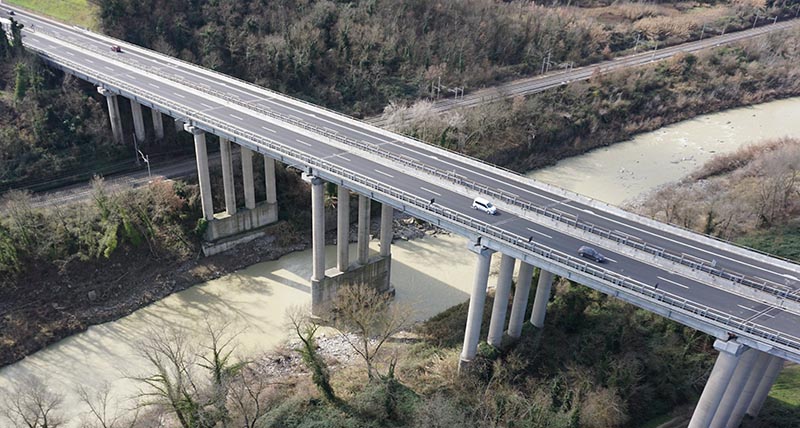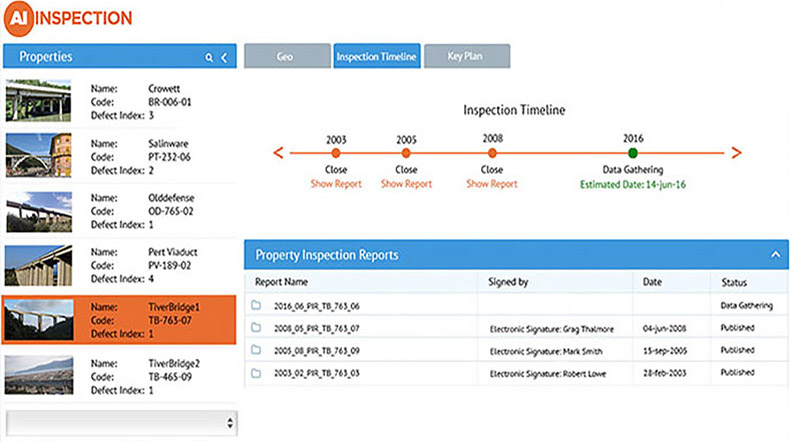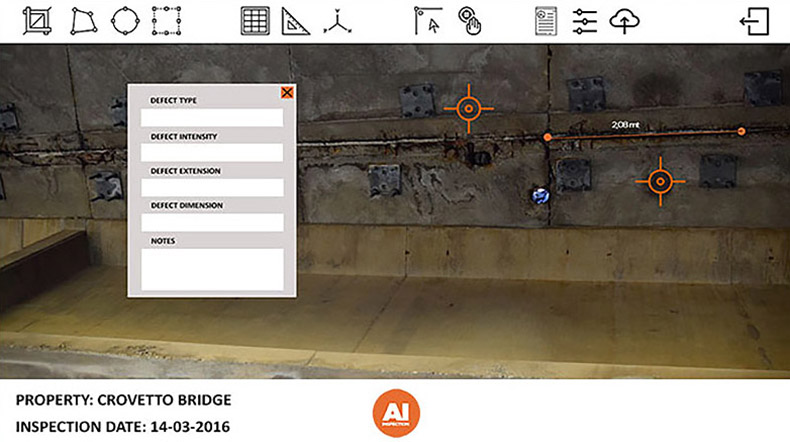AiviewGroup using Leica Geosystems UAV solution for bridge inspections
Leica UAV brings efficiency to bridge inspections

Using the Unmanned Aerial Vehicle (UAV) from Leica Geosystems to create highly precise data for bridge inspections, customer company AiviewGroup is getting ahead in surveying, maintaining and inspecting more than 4,000 infrastructural buildings each year.
As the first country with roads constructed especially for motor vehicles, Italy introduced the autos trade. First built in 1921, the high-speed roadways have continued to expand ever since. Owned by the Italian government but maintained and operated by a group of concessionaires for profit, the largest of these companies is the Autostrade per I’Italia, servicing 3,408 kilometres in Italy and managing more than 5,000 km of roadways from Brazil to India.
Infrastructure inspections from the air
Within its network of 3,408 km roadways, Autostrade per l’Italia has to maintain more than 4,200 bridges, viaducts and tunnels. Every bridge must be visually inspected twice a year by law with a more in-depth inspection with an engineer on a yearly cycle. With this large number of bridges to inspect in mind, Autostrade per l’Italia was looking for more efficient ways and started a collaboration with AiviewGroup on a robotic solution.

“We have been doing UAV bridge inspections with this UAV since 2012,” says Nicola Marietti, bridge inspector with AiviewGroup. “We found the visionary within this customer and have built some success while developing specific software and methods for managing bridge inspections with a UAV at the centre of the information technology solution.”
The special mount for a camera on the top of the UAV from Leica Geosystems allows the crew close-up looks under the deck and in tight spots. The use of professional pilots to control the UAV ensures safety for the controlling crew underneath the bridge and to process the collected data. AiviewGroup has developed an algorithm to evaluate the taken pictures and detect issues against a library of defect taxonomy.
“We have a well-defined procedure to better understand what kind of problem might be occurring with the bridge and how to report that to the customer,” states Marietti. “The algorithm provides a status for different elements of the infrastructure. We check for problems with cement, iron of the bridge, vegetation, and the environment in general.”
Even though the software takes care of the analysis and reporting, there is still a heavy human element in the workflow for conducting each bridge survey and verifying the autonomously created reports with the knowledge of a civil and structural engineer.

The AiviewGroup has created the cloud platform Ai Inspection in which the company manages all assets of their customers. The entire workflow of an inspection, from the planning to the fieldwork analysis can be done within this software.

The technological approach the AiviewGroup and their partners came up with makes it possible to inspect bridges without shutting down the traffic. A usual inspection would require at least one line to be shut down in order to inspect the bridge. Furthermore, UAVs require much smaller crews, which reduces the costs for the client. Instead of a special highway vehicle and three-person crew with an arm and bucket for placing the inspector under the bridge, and the corresponding six-person traffic safety personnel, the UAV works below traffic with a three-person crew. A further cost saving comes from the reduced time it takes for each inspection using the UAV.

Added value for inspections
With all these advantages in mind, AiviewGroup insists that when it comes to robotics and automation, a team with specialties and professionalism is always required for the demands of high precision inspection and analysis.
“The risk is high on every flight, and we fly between four and six hours in a day when we go out to do inspections,” says Marietti. “We move methodically in a difficult environment for the whole day. It’s impossible to do this job without specialised people.”
Each inspection follows the same pattern. Before taking off with the UAV, roughly 30 per cent of the time and effort are spent on planning the flight. On the spot, the multicopter is the main tool, along with the monitor station for real-time evaluation during the flight. The actual flight takes up to about 10 per cent of the overall mission and the remaining 60 per cent are spent on the post processing, evaluation and presentation of the collected data.
To use UAVs and other automated data collection tools for surveying and inspecting infrastructural constructions is a big step up in ways engineers will work in the future. Redefining these workflows with the newest technology is a disruption with traditional surveying, but the data that can be collected now makes this approach by AiviewGroup a much more informative input for clients and engineers.

This high quality data is based on traditional imagery sensors as the source of information. With these methods already working, there are still more options to combine the possibilities of an UAV and sensor technologies which collect comprehensive data to evaluate the state of a construction (e.g., the use of hexacopter platform fitting LiDAR sensors in order to create high-accuracy 3D models or thermal sensors to detect defects causing heat due friction). Multispectral or hyperspectral sensors would allow customers to get the materials fingerprint and to analyse the material properties of the area that has been captured, giving insight on detailing species type and even mineral properties of the ground below.
To urge the autonomous character of UAVs there are even opportunities to automate the flight by using the teach-in function, so the copter can repeatedly fly the same way to collect comparable data of the same areas.
Giving the possibilities to adapt nearly every sensor needed onto the UAV and into the workflow, the industrial UAV is a sensor platform rather than just an imaging platform. There are many more possible applications and insights when the “eye in the sky” is given superpowers that make it capable of sensing and capturing far more than we can see.























